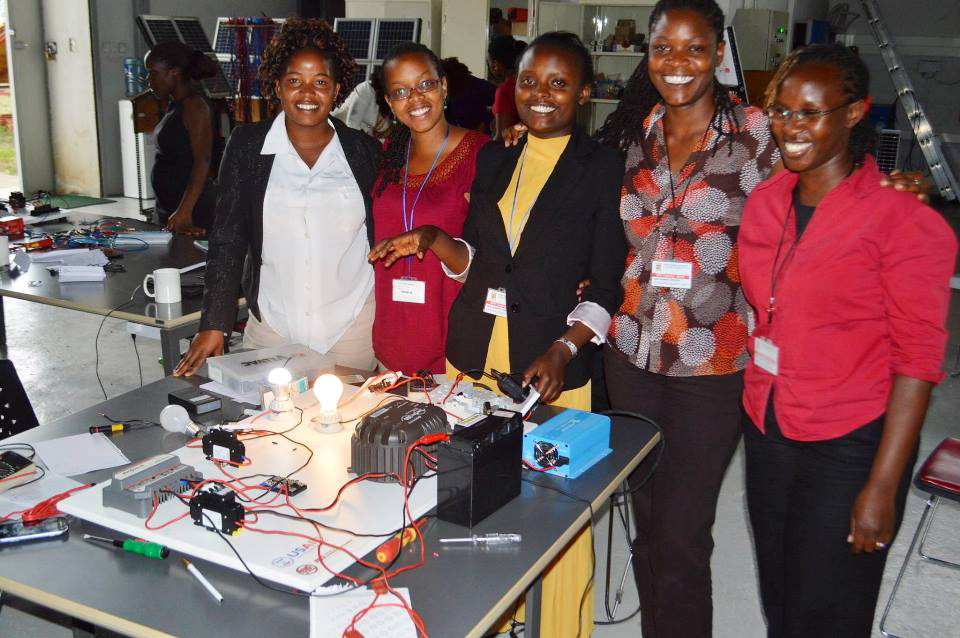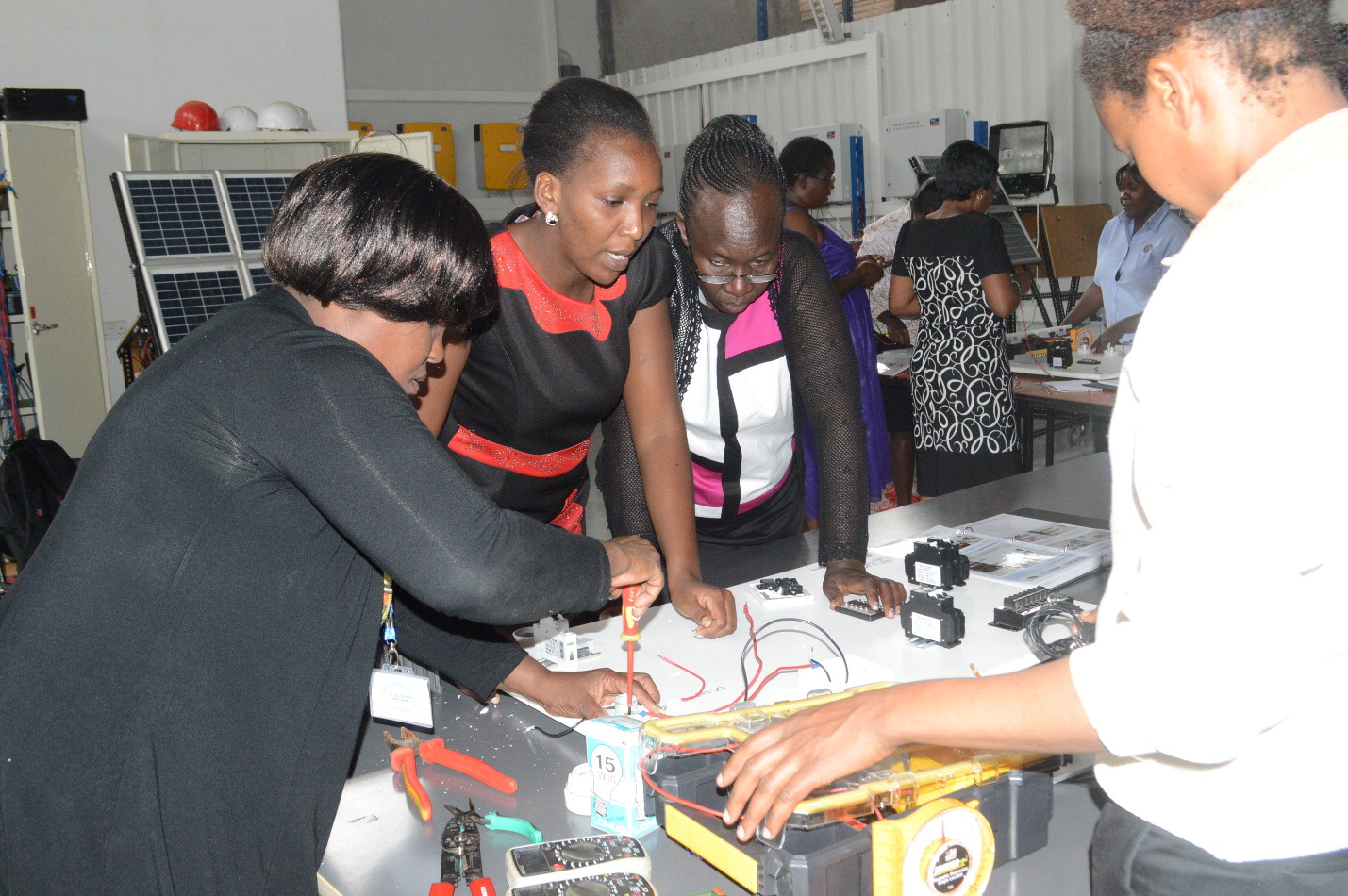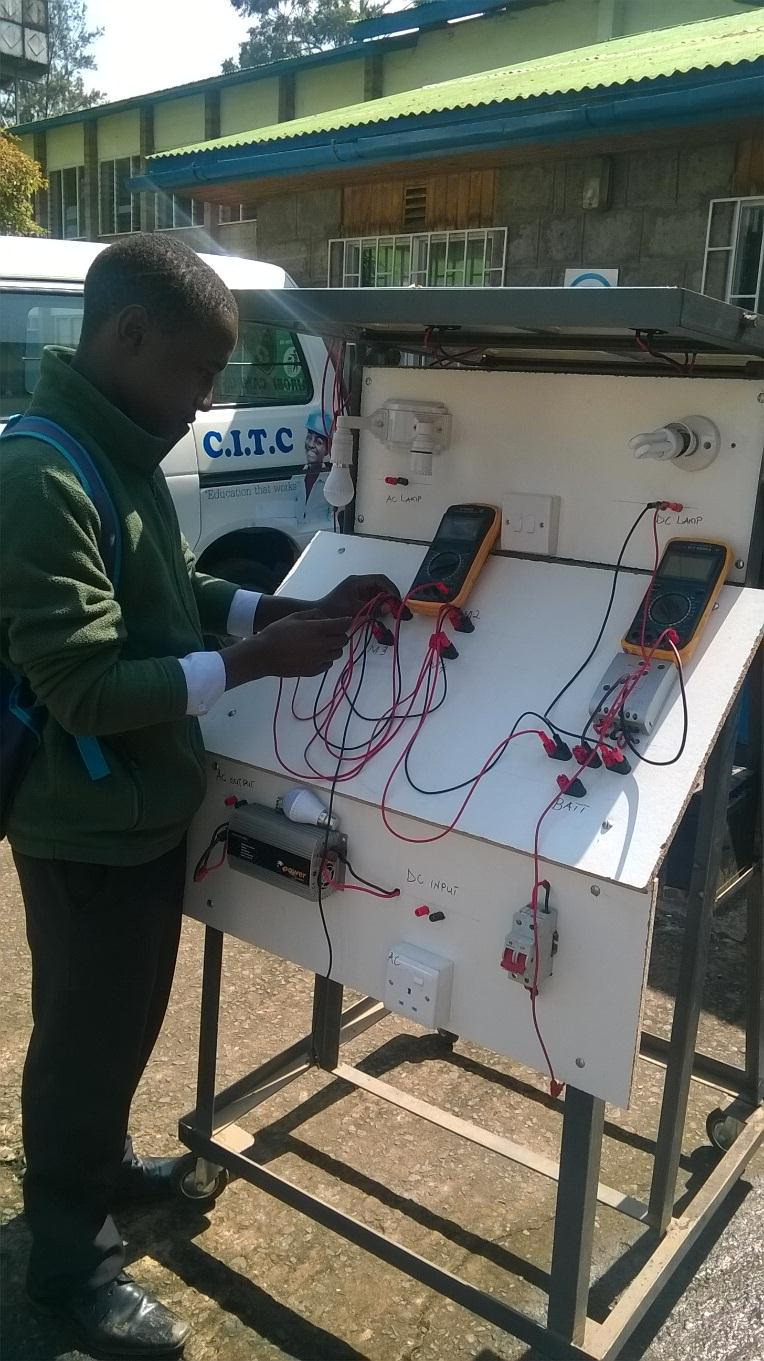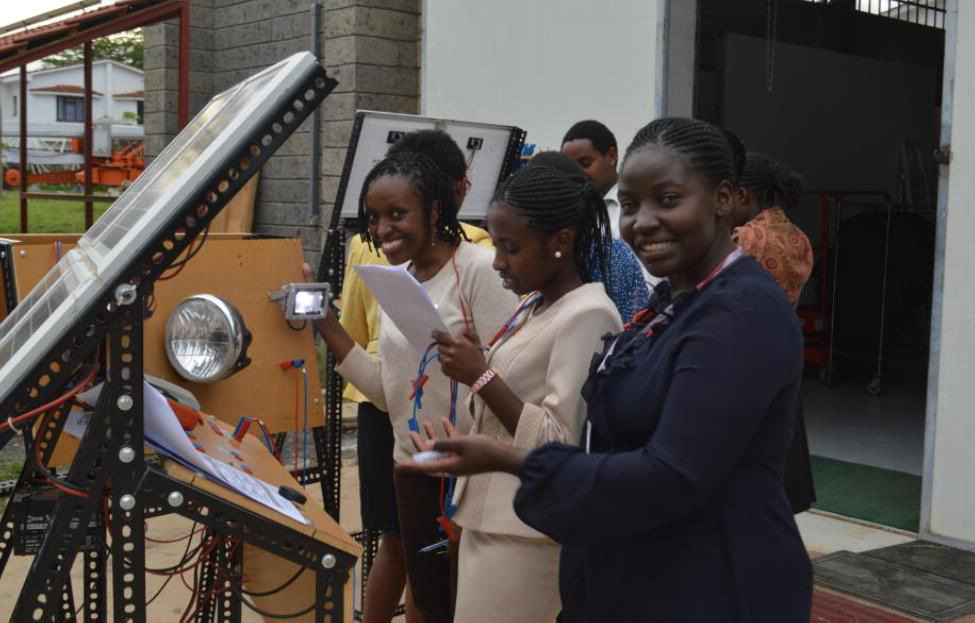|
Cycle 3 (2014 Deadline) Development and implementation of a solar PV outreach training module for capacity building in East Africa
PI: Izael Da Silva ( idasilva@strathmore.edu), Strathmore University, Nairobi U.S. Partner: Benjamin L. Ruddell, Arizona State University Project Dates: September 2014 to December 2016 Although the Kenyan solar photovoltaic (PV) market is often considered as a successful commercially driven market, market spoilage due to poor quality service has significantly hindered market growth. Numerous studies have revealed statistics indicating poorly designed and installed solar PV systems. In December 2012, the Energy Regulatory Commission (ERC) published the “Energy Solar Photovoltaic System Regulation 2012”. The relevance of the regulations is underpinned by the size of the solar market (US $6-8 million per annum, growing at about 10% annually). There are approximately 800-1,000 solar PV technicians working in the Kenyan market currently, with the majority having no formal training or certification. These practitioners are meant to provide the necessary service to end-users as the demand for solar PV systems is high especially in rural areas of the country. The regulations have been developed with the intention of improving the delivery of design, installation and maintenance services within the solar PV sector in Kenya. The regulations require that only licensed technicians are allowed to design and install solar PV systems, and to be licensed, technicians must have undertaken a solar training course. In a survey funded by JICA in 2012 in which 41 higher education institutions participated, it was identified that only 50% offered courses in solar PV technology. Of the 368 teaching staff interviewed, only 16% had received prior training in solar PV technology. Furthermore, 52% of the institutes did not have access to adequate training materials while 60% of the respondents felt that they did not have appropriate hands-on training equipment and 20% did not have any hands-on training equipment. The survey points to the urgent need to strengthen solar PV training in Kenya by providing training equipment and materials as well as build capacity of trainers in solar PV courses to enable them to offer quality training with the required hands-on-skills. This PEER project aims to develop and implement a solar PV training and outreach program that will comprise training, testing, and certification services throughout many areas in the country. The goal of the project is to train at least 100 trainers and through them 1000 technicians to certification level T2 within 36 months. A suitable number of mobile labs fitted with hands-on training equipment and training materials will be acquired as part of the project The project will support ongoing efforts by the Government of Kenya to promote wider adoption of renewable energy solutions and thus increase and improve access to sustainable energy especially in rural and marginalized areas in Kenya. The project will be implemented in close collaboration with the Ministry of Energy, ERC, and NITA. It will also lead to strengthening of national institutions through capacity development of national training institutions. The project will contribute to increased access to modern and renewable energy in rural and peri-urban areas of Kenya through access to quality solar home systems. Beyond access to energy, it will contribute to reduced kerosene fuel consumption and thus generate economic savings, improve indoor air quality, reduce deforestation and avoid greenhouse gas emissions thereby contributing to climate change mitigation. In addition, it will generate income and employment, and foster productive use of energy. Combined with an enabling policy environment, the project will deepen the solar PV market in Kenya. It is expected that this will lead to a mature market for solar PV technologies and financing.  |  | | Training of Trainers. Photos courtesy of Dr. Da Silva | Training of Trainers. Photos courtesy of Dr. Da Silva |
Final Summary of Project Activities
Dr. Da Silva’s Power Africa-funded project ended as of December 31, 2016. Its goal was to develop and implement a solar photovoltaic (PV) outreach training module for capacity building in East Africa. With PEER funds, the Strathmore Energy Research Center (SERC) at Strathmore University (SU) aimed to support the energy sector by strengthening solar PV training in Kenya. This was done by providing training equipment, materials, and capacity building for solar PV trainers to enable them to offer practical and high-quality instruction at technical training institutions (TTIs). According to the PI, this project has been very successful in capacity building and has generally achieved all of its main objectives. One of the end goals envisioned at the proposal stage was to support existing programs of the Government of Kenya aimed at widening the adoption of renewable energy solutions, thus increasing and improving access to sustainable energy, especially in rural and marginalized areas in Kenya.
The project activities kicked off with a launch held at SU to raise public awareness of the planned PEER effort. As a result, Dr. Da Silva and his team initiated collaboration with the German Development Cooperation (GIZ EnDev). SU signed Memoranda of Understanding with various TTIs to firm up the collaboration and commitment to ensure that the project objectives were achieved. This aspect of signing the MOUs helped to ensure that only those institutions truly committed to the planned training activities would move forward with participation. SU designed a Mobile Training Toolkit to be used in the hands-on training sessions at the TTIs. The design was patented, with the model design being approved by USAID and NSF. Dr. Da Silva reports that the motivation for the design was to provide a toolkit that could be locally made or assembled at the institutions to ensure sustainability of the project through use of local equipment. This also enabled the TTIs to be equipped with both the SU-developed toolkit and the Vocational Training and Education for Clean Energy (VOCTEC) toolkit from Arizona State University (ASU). Through their PEER activities, the team demonstrated that the locally made mobile kits were both effective and cheaper than other toolkits for use in the hands-on training required for the TTIs. More training kits were given to each TTI with support provided by the GIZ EnDev collaboration.
Train-the-trainers sessions were conducted at the SU training laboratory, and each TTI sent two technical personnel who were qualified to become trainers. A total of 50 technicians attached to 25 institutions were trained, and 20 of them subsequently received their licenses while the rest are still in the process of obtaining them. Follow-up workshops and field visits were conducted to provide the TTIs with more understanding of the accreditation requirements. The experience from the training of trainers and the project activities provided immense feedback during the review of the training curriculum.
 |  | | Trainings on the solar PV systems | Photos courtesy of Dr. Da Silva |
Special solar PV training courses were organized specifically to build the capacity of female technicians with basic skills in solar PV systems, empowering them to educate others, developing their entrepreneurship skills, and making them ambassadors and champions for the solar PV program. A total of 60 women were trained in three separate sessions under this component of the project, with the sessions being led by female trainers. The participants were from various companies, with different backgrounds and experience. “The biggest impact from the April 2015 training was the formation of Women in Sustainable Energy and Entrepreneurship (WISEE). The group has gone on to conduct/participate in two more female trainings, concluded a consultancy assignment on energy auditing for level-four hospitals, and got a contract to install Solar Suitcases, hence [it] supported WISEE members to get their licenses,” said WISEE chairperson Tameezan Wa Gathui. In order to avoid duplication of efforts and identify synergies, Dr. Da Silva and his team proposed that relevant public and private sector stakeholders should be engaged in the training activities proposed. The PEER project attracted the attention of decision makers, policy makers, and other key stakeholders on the local and national levels. These included the Energy Regulatory Commission; National Industrial Training Authority; Ministry of Energy; Ministry of Education; GIZ EnDev; National Commission for Science, Technology and Innovation, county officials; and other universities. Activities aimed at promoting inclusion, engagement, and “buy-in” by policy makers, decision makers, and other key stakeholders were successfully carried out and led to buy in from GIZ and the Ministry of Energy in Kenya. In summary, Dr. Da Silva's PEER project contributed to the development impacts of the Power Africa initiative, specifically in expanding the reach of off-grid solutions. In addition, it helped facilitate achievement of Vision 2030 Kenya’s long-term development blueprint, which aims to transform the country into a middle-income country through providing a high-quality life to all its citizens. The project has built the human and training infrastructure capacity of Strathmore University in the area of solar PV. In addition, the project has led to at least 50 trainers and through them, 1120 technicians trained and certified at level T2. Therefore, there is a sufficiently qualified pool of solar PV professionals conversant with proper design, installation, commissioning, and maintenance of solar PV systems. This PEER project has also built human capacity for women in the solar industry, hence helping to improve the gender balance in this male-dominated industry. Lastly, Dr. Da Silva’s PEER project has contributed to increased access to modern and renewable energy in rural and peri-urban areas of Kenya where the technical institutions are located through access to quality solar home systems. Back to PEER Science Cycle 3 Grants
|
|
|
|







